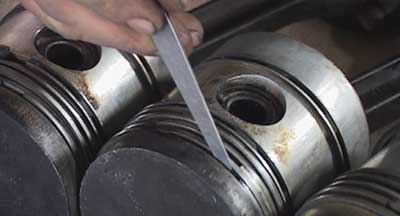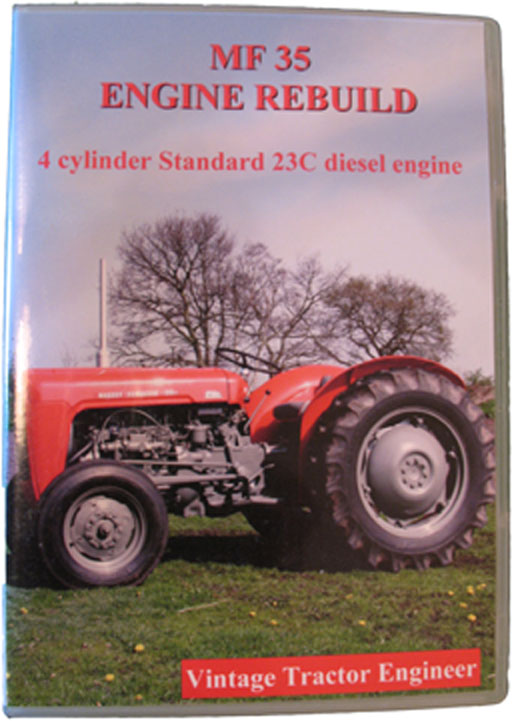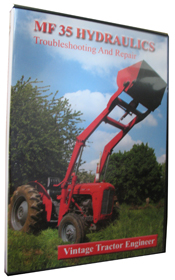Want to check out our tractor maintenance videos? Click here to see what we've got!
On occasions there can be an unexplained increase in the tractor engine oil level. The question is why has this happened.
There can be one of two contaminants in the oil; either coolant water or diesel fuel can escape from their systems.
The first observation to make is to assess the colour and consistency of the fluid. White creamy coloured oil is indicative of water contamination, where as diesel contamination tends to dilute the oil making it less viscous. Contamination of the oil must be remedied immediately as it will cause damage to the engine.
Fuel Contamination
There are three possible routes for fuel to enter the lubrication system
- Fuel lift pump – The diaphragm can split providing a route for diesel to enter the engine crank case.
- Injector pump – Injector pump shaft seals have been known to fail.
- Damaged Injectors – Leaking injector nozzles during periods of inactivity can drip their contents into the cylinder which then runs down between the piston and bore into the sump.
Water Contamination
Water can enter the oil system by:-
- Leaking head gasket – This allows contamination between the sections of the engine. The most likely cause of a leaking head gasket is from over heating.
- Cracks in the cylinder head or block – From overheating or frost damage.
- Failure of seal around bottom of wet liner – Incorrect coolant mixture. For example, John Deere coolant systems should be filled with CoolGuard.
- Corrosion of wet liner / porous block – Coolant without corrosion inhibitors added increases sludge formation, which is not only corrosive but also abrasive. This can eventually pierce the cylinder wall.
- Heat exchanger failure – Many engines are fitted with water to oil heat exchangers which can leak fluids between the systems. This can also cause oil to enter the coolant system.
- Exhaust pipe – Uncovered vertical exhaust pipes on tractors that have been left outside in the rain will eventually fill up with water (a scenario all too common with old tractors left to decay in farm yards). As the water level increases over a period of time it will find a path into the cylinders (through the exhaust valves) and the engine. On 4 cylinder (and more) engines, there is always at least one exhaust valve open at any one time.






on my JD 4010 can the manual throttle on the steering column let fuel in the oil pan if its not off all the way
Have an International McCormick B250 1950’s diesel tractor. Been having oil in the radiator and white exhaust.
I’ve changed the head gasket. Head was not warped. It reduced the exhaust for a short period , but has gotten worse now. I’m still getting oil in the radiator, and a lot of white exhaust. Any idea as to what else may be the cause? Thanks
Hi I have MF40 and it was parked for 6 months. I tried to start it but it did not start. Then I found that there was water in the glass fuel filter as well as in the injector pump. I bleed the fuel system. At the end I found some water in the lines to the injector after the fuel injector pump. I cleared it by bleeding but tractor still does not starts. I could not bleed one line to injector due to imposable access due to front end loader fitting. Now I don’t know what to do or what is the problem. Is the water in the engine trough injector is a problem? if yes what is the solution? Any other suggestion please help.
Regards
Ali
Typo on previous!
Diy smallholders, not sky stakeholders!
Great site. Godsend for sky stakeholders!
Just replaced the water pump on my b275, but have discovered water in the oil. Could there be a link — poor fitting gasket or something, or should I be looking to the head gasket or something else as probable cause?
work has been done on all three reasons.. problem still persists. changed lift pump. nozzles gott cleaned and from an advance workshop. maintenance and calibration carried out of injector pump.
I have a problem with diesel oil contaminating the engine oil in my Dexta. This happens via the intake manifold. After the primer is used to coat the heater coil with diesel the diesel continues to flow very slowly into the manifold and eventually makes its way to the engine lubricant. This is a very expensive fault which would eventually damage the engine if the oil is not replaced. I would appreciate hearing from anyone else who has encountered this problem. I have fitted an on/off tap to the heater coil feed but a moment of forgetfulness ( to which I am very prone) and the engine oil has to be replaced.
.
Hi Great Site, lots of info. I have a different problem with our 4 cyl 35, the water flows out from the drain at the top of the radiator.
Any ideas.
Thanks